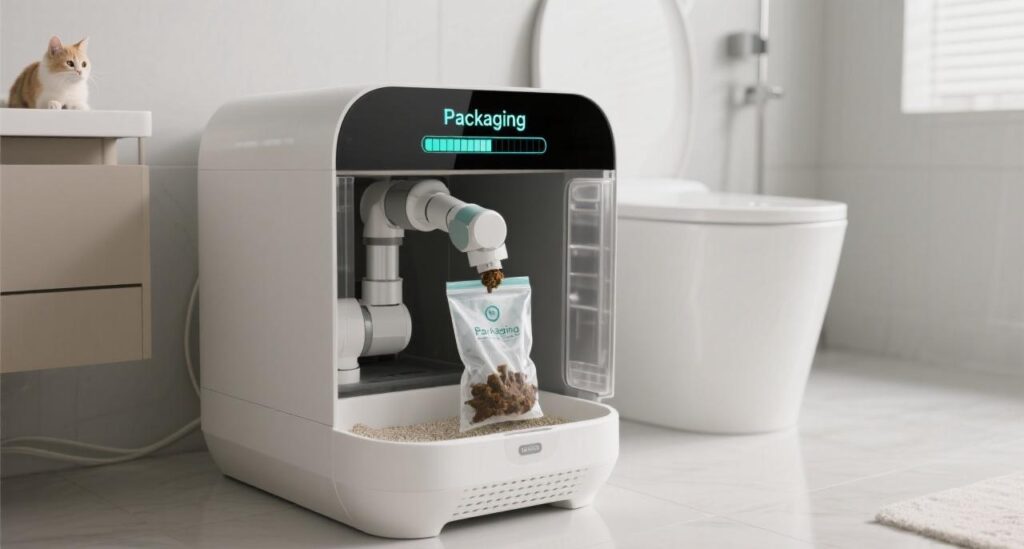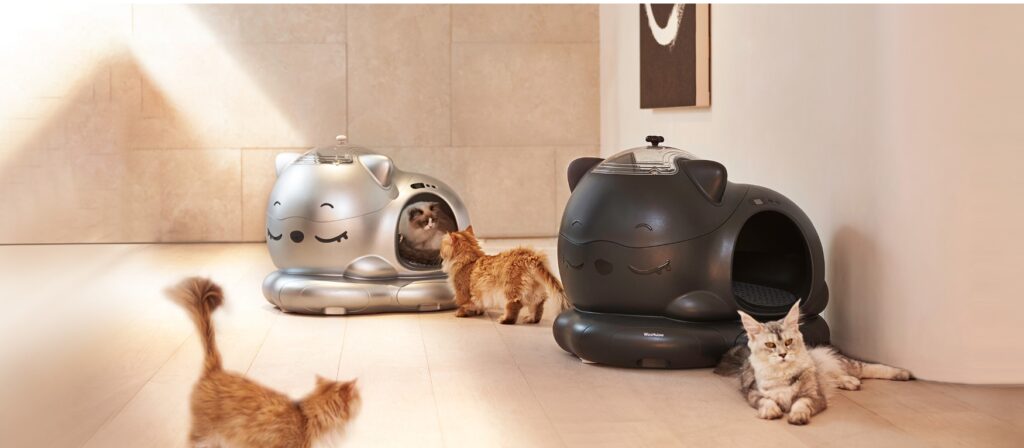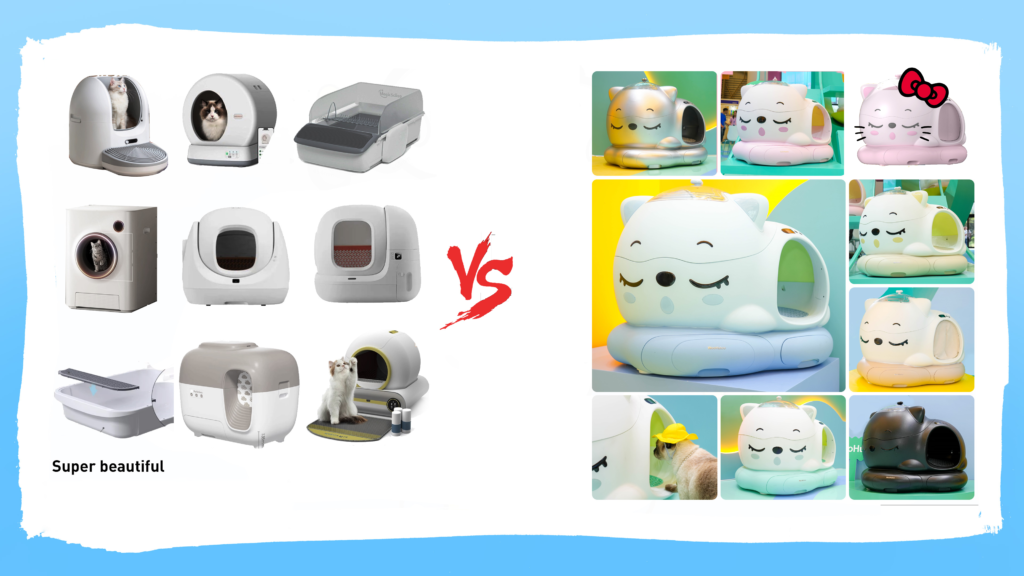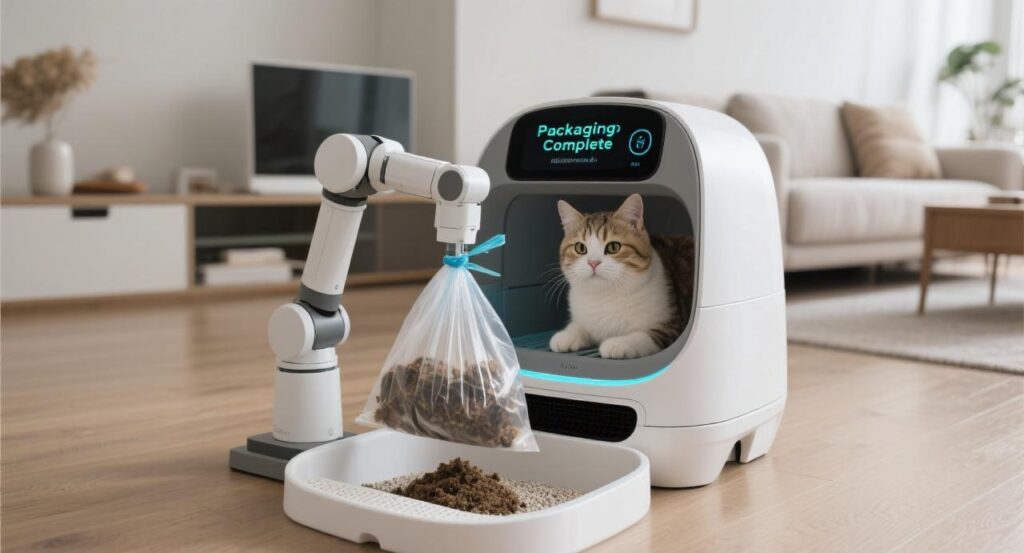Introduction to Smart Litter Box Innovations
Gone are the days when cleaning the litter box was the least favorite chore of cat owners. Thanks to exciting trends in pet technology, smart litter boxes are revolutionizing the way we manage our feline friends’ needs. This blog explores some of the latest innovations making waves, such as auto-bagging, litter replenishment, and ecosystem integration.
Have you ever wished for a litter box that practically takes care of itself? Well, the concept isn’t far-fetched anymore. Imagine a sophisticated system where your litter box automatically bags waste, minimizing your contact with it and significantly reducing pathogen exposure. With advanced sealing techniques, these systems ensure that odor is contained, and maintenance becomes a breeze.
And that’s not all! Smart litter boxes are integrating technology that forecasts when to replenish litter, tailoring the amount dispensed based on your cat’s habits. They even consider multi-cat households, compensating for increased litter consumption due to those adorable, yet messy, cat paw tracks. Plus, there’s the incredible potential of ecosystem integration, where the litter box communicates with other smart home devices to improve your pet’s environment.
Stay with us as we dive deeper into these innovations and examine how they’re set to transform the day-to-day life of both you and your cat!
Auto-Bagging Technology

In recent years, auto-bagging technology has emerged as a groundbreaking feature in the smart litter box market. This development aims to reduce the time and effort pet owners spend managing their feline friends’ waste by taking automation to another level. However, as with most innovative technologies, there are certain hurdles and intriguing advancements along the way. Let’s dig into what makes auto-bagging a game-changer and the challenges it faces.
Current Limitations
Despite its promising potential, current auto-bagging technology in smart litter boxes isn’t without its limitations. A major concern is the risk of pathogen exposure during manual waste bag changes, which currently stands at a significant 60%. This is not trivial, considering the health risks to both humans and pets. Additionally, conventional heat-sealing methods, commonly used to secure the waste bags, tend to have a failure rate exceeding 25% when exposed to high humidity conditions since urine can degrade the adhesive used. These issues underscore the need for robust and reliable sealing technologies that can withstand varying operational and environmental conditions.
Mechanical Innovations
Fortunately, the future of auto-bagging technology shines bright with cutting-edge mechanical innovations. A novel U-shaped aluminum nail cold-sealing method has been introduced to tackle the challenge of sealing failures without relying on heat. This technique uses non-thermal physical pressing, driven by stepper motor-operated T-blocks, to ensure a secure seal that can bear loads exceeding 5kg, boasting a stellar 99.7% reliability rate. Not only does this method considerably boost bag security, but it also slashes energy consumption by up to 90%, making it a sustainable and eco-friendly solution. Moreover, incorporating a leak-proof negative-pressure adsorption system, which employs a vacuum pump to pre-bagging process, effectively evacuates air to prevent bag bloating and potential leaks.
Multi-Litter Compatibility
To achieve widespread adoption, smart litter box designs must accommodate a variety of litter types. Each litter type presents its own set of challenges when it comes to seamless integration into the auto-bagging process. For instance, bentonite litter can cause dust accumulation on sealing surfaces, which has traditionally posed a hindrance. An innovative high-pressure air-jet cleaning mechanism has been developed to keep these surfaces clear and ready for operation.
Tofu litter, known for its tendency to clump in humid environments, now benefits from a silico wiper pre-crushing module that pre-processes clumps and minimizes their impact on the system. Meanwhile, silica gel litter, which often boasts sharp particles that can pierce conventional bags, now encounters reinforced films (measuring 0.2mm) which provide an added layer of protection, ensuring the integrity of the collection bag.
| Litter Type | Challenge | Solution |
| Bentonite | Dust clogs sealing surfaces | High-pressure air-jet cleaning |
| Tofu litter | Humid clumping | Silico wiper pre-crushing module |
| Silica gel | Sharp particles pierce bags | Reinforced film (0.2mm) |
Smart Replenishment System: From Monitoring to Dispensing
Beyond the auto-bagging advancements, smart litter boxes are also breaking new ground in litter replenishment. Imagine never having to remember when to top up the litter box because the system has got you covered. This section delves into the cutting-edge technologies that are propelling litter replenishment systems from rudimentary monitoring to a sophisticated auto-dispensing ecosystem.
Dynamic Monitoring Tech
At the core of the smart replenishment system lies dynamic monitoring technology, which uses the latest in sensory tech to provide real-time updates and alerts to pet owners. One standout feature is the use of 3D laser scanning, specifically Time-of-Flight (TOF) sensors, which map the volume of litter in the box with an impressive accuracy of ±50ml. Beyond volume assessment, ensuring the litter’s cleanliness is paramount. Near-Infrared (NIR) spectroscopy comes into play here, using wavelengths between 900-1700nm to effectively detect moisture levels and distinguish clean from contaminated litter. These technologies provide a real-time snapshot of the litter’s condition, which is key for precise replenishment.
Auto-Dispensing Mechanism
Once the system understands the litter box’s current condition and needs, an advanced auto-dispensing mechanism steps in to maintain the optimal litter level. Anchored by a unique tiled-wheel metering design, litter is dispensed efficiently from the hopper. Each grid of the tiled-wheel grid holds exactly 30ml, and with the rotation controlled by a stepper motor, the system can precisely deliver the required volume of litter to the box based on real-time needs.
Furthermore, the design combats one of the common issues in litter dispensing — bridging and clumping — through an anti-bridging feature. This feature utilizes a helical agitator, which rotates at 5rpm to ensure a consistent flow of litter without blockages. The result is a seamless integration of precision and convenience, offering pet owners an effortless solution to maintaining a clean and adequately filled litter box.
By addressing both the challenges of auto-bagging and the intricacies of litter replenishment, the smart litter box is evolving beyond a simple pet accessory to a sophisticated part of the home ecosystem. These technologies stand at the forefront of pet care innovation, offering a blend of hygiene, efficiency, and convenience that can truly change how we view and manage our feline companions’ needs.
Ecosystem Integration Protocol
As we step into the future of smart litter boxes, the integration with the broader pet and home ecosystem is a key trend to watch. Ecosystem Integration Protocol aims to ensure that these devices aren’t just standalone products, but part of a connected network that contributes to a seamless pet ownership experience.
Multi-Modal Data Fusion
Imagine a smart litter box that not only handles your cat’s business but also syncs with your home devices to maintain an optimal environment. Multi-modal data fusion makes this possible by combining various data streams. For instance, if ammonia levels exceed 10 parts per million (ppm), the litter box could automatically trigger an air purifier to kick in at maximum speed. If your cat spends more than five minutes in the litter box, perhaps feeling stressed, the system can adjust the air conditioner to a relaxing 26°C, creating a calming oasis for your pet.
This interconnected approach means that the litter box doesn’t just maintain cleanliness—it actively participates in creating a healthy and stress-free environment for your cat. It’s not just about waste management anymore; it’s about holistic well-being.
Edge Computing Optimization
Now, how do these features work without a hitch? Enter edge computing optimization. By relying on local decision-making (98% of processes take place on the device itself), the system boasts an impressive latency of less than 200 milliseconds. This rapid response is achieved through the dual power of 5G and Wi-Fi 6. The benefits are twofold: instant interactions and minimal disruptions to your network bandwidth.
By processing data locally, the smart litter box reduces dependency on cloud servers, making operations faster and more reliable. This means your cat’s comfort and your peace of mind are prioritized, all while ensuring that the device efficiently integrates with your existing smart home technologies.

Commercialization Roadmap
As these cutting-edge features find their way from the prototype stage to commercial products, there are several exciting paths and benchmarks to consider. The commercialization roadmap for smart litter boxes outlines how manufacturers plan to bring these innovations to pet owners around the world.
Cost Control Path
A major step in making smart litter boxes accessible is controlling production costs. By localizing the core components like Time-of-Flight (TOF) sensors, production costs are substantially reduced. For instance, TOF sensors, crucial for tasks like volume measurement, are projected to drop from a price of $12 to just $4 by 2025, thanks to mass production.
Furthermore, adopting a modular design where components like the auto-bagging unit can be replaced independently results in a 70% reduction in upgrade costs. This strategy not only lowers the initial price point but also enhances long-term affordability, allowing more pet owners to enjoy advanced features without a hefty price tag.
Reliability Benchmarks
When it comes to technology, reliability can’t be compromised. That’s why setting high standards is crucial. For smart litter boxes, rigorous reliability benchmarks are being established. The sealing mechanism, which is critical for auto-bagging, has undergone 100,000-cycle fatigue testing to ensure durability. This means each component is validated to withstand repeated use without failing, assuring pet owners of a long-lasting product.
Moreover, every material used is tested for biocompatibility, adhering to ISO 10993 certification standards. This ensures the safety of every component in contact with your pet or the litter itself, further enhancing trust and peace of mind.
Future Tech Convergence
Looking ahead, the horizon of smart litter boxes is gleaming with possibilities as they converge with future technologies. For predicting litter usage cycles, AI-driven replenishment models like Long Short-Term Memory (LSTM) hold promise with less than an eight-hour margin of error. This means your smart litter box can forecast when it needs refilling, minimizing surprises and ensuring constant readiness.
Additionally, tech typically used in industrial settings, like vision systems known for monitoring steel ladles, is being adapted to detect litter anomalies. This innovation widens the range of insights your smart litter box can provide, contributing further to its functionality.
The integration of these technologies means that the boundaries of what smart litter boxes can do will keep expanding, supporting even more sophisticated and useful features in the future.
As smart litter boxes become smarter and more integrated into our homes and lives, these advanced protocols and roadmaps are guiding them toward a path of greater efficiency, convenience, and value. With the continuous evolution in automation, connectivity, and predictive analytics, pet owners can look forward to a future where taking care of their furry friends is more effortless and enjoyable than ever.
| Module | Metric | Target |
| Auto-bagging | Seal strength/failure rate | >50N/<0.3% |
| Litter dispensing | Volume accuracy/delay | ±10ml/<3s |
| Ecosystem sync | Cross-device success rate | >99.95% |
| Power efficiency | Standby/peak power | <1W/<80W |
Conclusion on Commercialization Trends

The commercialization of smart litter boxes is a rapidly evolving landscape with promising technology integrations. Auto-bagging and ecosystem integration not only offer convenience but also enhance health and hygiene standards. For pet owners, these smarter designs translate into less manual handling, reducing exposure to pathogens significantly.
– Auto-Bagging: Utilizing innovative sealing technologies, like cold-sealing with U-shaped aluminum nails, smart litter boxes ensure high reliability and effectively minimize odor leakage and exposure risks.
– Litter Replenishment: Precision in litter replenishment algorithms ensures constant availability. Systems employing load sensors and long-term absence reserve algorithms guarantee that pet owners are always prepared, even on unexpected trips.
– Ecosystem Integration: With technology like edge computing, smart litter boxes react to environmental changes, optimizing pet comfort and maintaining indoor air quality efficiently.
The future looks promising with ongoing advancements. As production costs decrease and smart litter boxes become more accessible, more pet families will experience the benefits of these technological innovations. The integration of AI-driven models and cost-effective modular components points to a future where managing pet waste is not only easier but smarter and more eco-friendly than ever.








